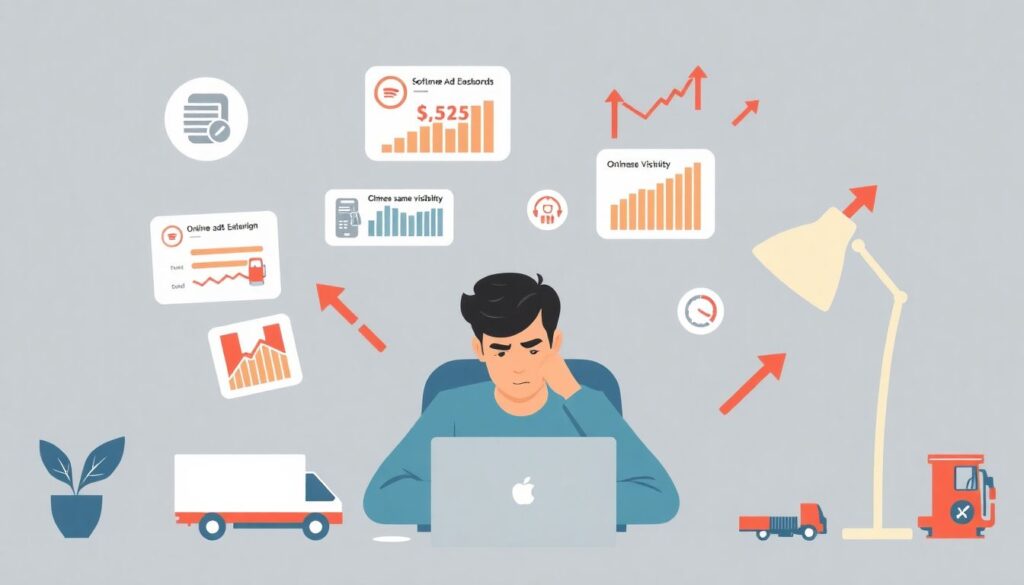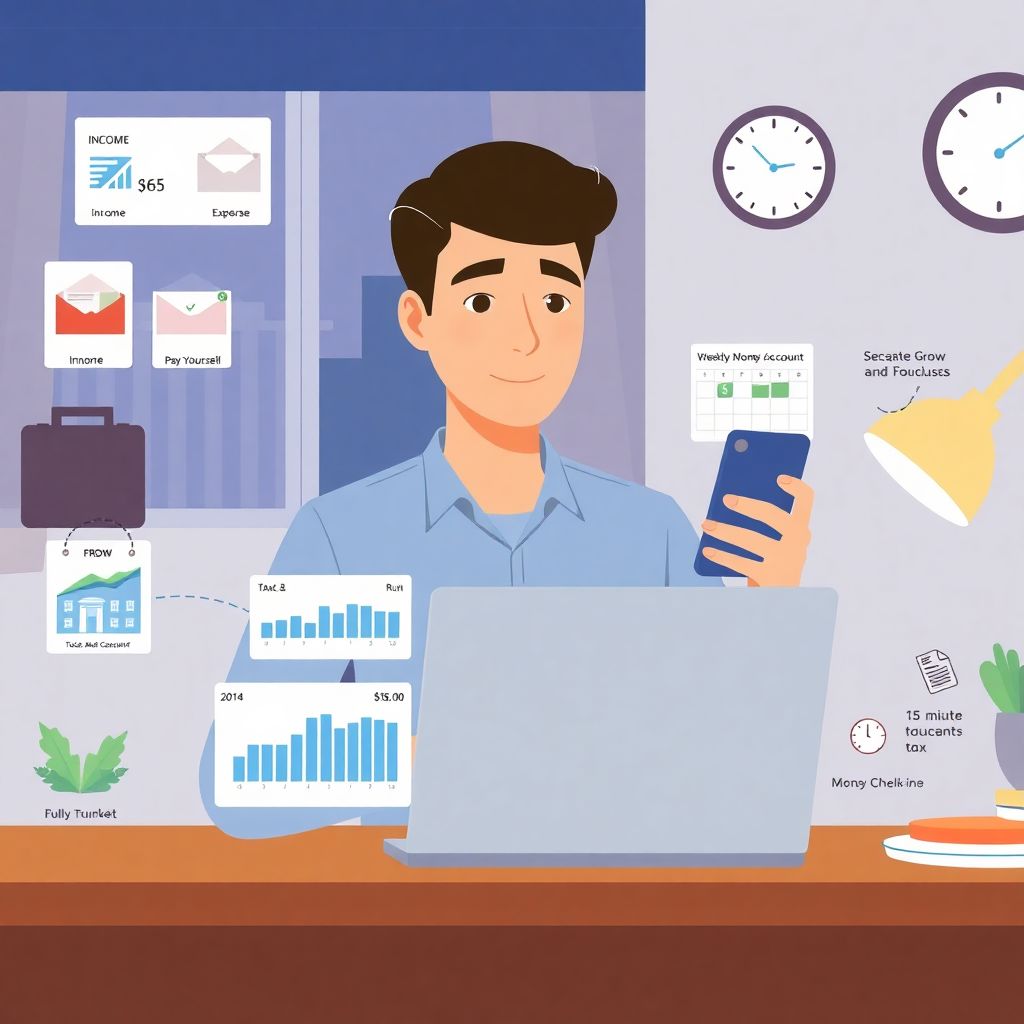Why your side hustle needs a budget (even if it’s “just a little extra cash”)
If your side hustle started as “beer money” and somehow turned into a second job, you’re not alone. Between 2022 and 2024, surveys in the US and UK have consistently shown that roughly 35–45% of adults earn money outside their main job. Many of them bring in a few hundred dollars a month, but a noticeable chunk—often around 15–20% of side hustlers—report making $1,000+ monthly.
Yet here’s the twist: in those same surveys, more than half say they don’t keep a separate budget for their side gig. Money comes in, disappears into the main account, and at tax time or during a slow month, things get messy.
Budgeting for a side hustle isn’t about turning your life into a spreadsheet. It’s about making sure your extra effort actually improves your finances instead of just adding more stress and overtime.
—
What changed in the last 3 years: stats and trends you should know
1. More people, more pressure, less time
From 2022 to 2024, three big shifts around side hustles showed up repeatedly in research:
1. Side hustles are more common. Post‑pandemic inflation pushed many people to pick up extra work. Across 2022–2024, the share of workers with a side hustle rose by several percentage points in many developed countries, especially among Gen Z and Millennials.
2. People rely on them more. In 2022, side gigs were often framed as “extra money”. By 2024, a growing slice of workers said they needed the income for essential expenses—rent, groceries, or debt payments.
3. Time is the new bottleneck. Average hours spent on side hustles have stayed in the 5–15 hours per week range, but reports of burnout and time‑management stress increased, especially among full‑time employees juggling family responsibilities.
In other words, the side hustle went from “nice to have” to “I can’t afford to lose this,” while everyone’s schedule stayed just as crowded.
—
2. How much money is actually in play?
Let’s talk numbers, not dreams.
Between 2022 and 2024, typical side‑hustle income in surveys landed roughly here:
– A big cluster earning $200–$500 per month
– A smaller but significant group above $1,000 per month
– A long tail of people making either very small amounts or building something that’s not monetized yet
Here’s the kicker: even among people making over $1,000 monthly from their side gig, a lot of them couldn’t answer basic questions like:
– “How much did you spend on tools, ads, or transport last month?”
– “What’s your after‑tax profit?”
– “Could you take a month off without blowing up your main budget?”
That’s exactly where a simple, low‑maintenance budget earns its keep.
—
The real goal: profit and clarity, not a complicated spreadsheet
Most people avoid budgeting because they imagine a 20‑tab Excel monster. For a side hustle, that’s overkill.
You need two things:
1. A way to see profit at a glance (income – expenses – tax estimate)
2. A way to protect your time so tracking doesn’t become another unpaid job
Think of a side hustle budget planner for full time employees as a lightweight dashboard: one page, a few categories, and some automation. That’s it.
—
The 10‑minute weekly budget routine
Here’s a practical flow that takes about 10 minutes a week.
1. Separate your money, even if you keep one bank
Open a dedicated checking account or at least a separate sub‑account / “space.” All side‑hustle income goes in; all side‑hustle expenses come out. This alone solves 70% of the confusion.
2. Create three buckets: Run, Grow, Pay Yourself
Every time money hits the account:
– 40–60% → Run (software, supplies, transport, fees)
– 10–20% → Grow (education, small ads, better tools)
– 20–30% → Pay Yourself (your pocket, not the business)
Adjust the sliders to your reality, but keep the structure.
3. Auto‑estimate taxes
If you owe self‑employment or freelancer taxes, skim a fixed percentage—say 20–30%—into a separate “Tax” sub‑account instantly. Even a rough estimate beats zero. Future‑you will be grateful.
4. Track only 4–6 categories
Instead of obsessing over line items, group expenses:
– Tools & software
– Marketing & platform fees
– Transport & logistics
– Education & training
– Misc / one‑offs
That’s enough detail to see patterns without drowning in data entry.
5. Do a 5‑minute weekly check‑in
Once a week, glance at:
– Total income this month
– Total expenses this month
– Estimated tax set aside
– What’s left to pay yourself or reinvest
If you can, link your bank to an app so most of this is automatic.
This routine keeps the numbers clear and protects your evenings and weekends from “just one more hour” of manual tracking.
—
How to manage finances for a side hustle while working full time
When you already have a 9‑to‑5 (or 8‑to‑6, let’s be honest), the real cost of your side gig isn’t just money—it’s time and energy. The trick is to treat money management as part of the side hustle, not some separate extra task.
Short answer: move decisions to default settings
You want fewer choices, fewer clicks, and fewer open loops in your head.
Some practical moves:
– Automate transfers.
Once you know your rough percentages (Run / Grow / Pay Yourself / Tax), set up automatic transfers when money arrives or on a weekly schedule.
– Schedule one “money appointment” per week.
Literally put 15 minutes in your calendar—say Sunday evening—labeled “Side Hustle Money Check‑In.” No phone, no email, just your numbers.
– Use categories that mirror your reality.
If you’re a driver, “Fuel & Maintenance” might be its own line. If you’re a digital freelancer, “Subscriptions & SaaS” is probably your main cost.
– Decide in advance how much time you’ll trade for money.
For example, cap your side hustle at 10 hours a week. If demand exceeds that, you either raise prices, streamline workflow, or say no. The budget then tells you whether the hours you keep are actually paying off.
—
Time‑saving tools that don’t eat your life
You don’t need the fanciest finance stack in the world, but you do want the best budgeting tools for side hustlers in a very practical sense: low friction, quick setup, and easy to understand on your phone.
Useful categories of tools:
– Banking apps with spaces/pots to separate tax, profit, and expenses without opening multiple accounts.
– Simple bookkeeping apps built for freelancers that categorize transactions automatically and export quick reports.
– Invoicing tools that send reminders so you don’t chase payments manually.
– Time saving budgeting apps for freelancers and side hustles that sync with your bank and show you profit and cash flow in one dashboard.
Rule of thumb: if a tool doesn’t save you more time or money than it costs within three months, ditch it.
—
Economic aspects: what your budget is actually protecting you from

A side hustle doesn’t exist in a vacuum. Between 2022 and 2024, three economic realities hit side workers especially hard:
1. Inflation and living costs

As prices climbed, many people took on extra work just to keep up. But inflation also hit your side hustle costs:
– Software subscriptions got more expensive
– Ads cost more for the same visibility
– Fuel and shipping prices jumped in many regions
If you’re not tracking these creeping costs, you might feel busier and more tired without noticing that your real profit (after expenses and inflation) is shrinking.
A simple monthly review—“Did my costs go up? Do I need to raise prices or trim tools?”—keeps your hustle economically sane.
—
2. Taxes and “invisible” obligations
Side‑hustle income often doesn’t have taxes withheld automatically, which can create ugly surprises.
A realistic budget:
– Reserves tax as a non‑negotiable “expense”
– Keeps receipts and transaction records ready
– Treats your side hustle like a tiny business, not a hobby
This matters even more if your side income pushes you into a higher tax bracket or triggers extra social contributions. You’re not just protecting money; you’re protecting peace of mind.
—
3. Risk, volatility, and runway
Side hustles can be seasonal or platform‑dependent (think algorithm changes, policy shifts, or marketplace rules). From 2022–2024, many creators and gig workers learned that one policy change can slash their income overnight.
Your budget is your early‑warning system. If you track:
– Average monthly income over 6–12 months
– Average monthly expenses
– How many months of “Run” costs you could cover from savings
…you get a realistic view of how fragile or resilient your hustle is. Your goal isn’t perfection; it’s simply not being surprised.
—
Impact on industries: how a million small budgets add up
When individuals start budgeting their side gigs seriously, it doesn’t just change personal bank accounts. It shifts whole sectors.
Freelance platforms and gig apps
As more side hustlers run their numbers, they become pickier about platforms:
– Workers migrate toward apps with better pay transparency and lower fees.
– Platforms that hide costs or underprice labor see higher churn.
– Rating systems start to reflect not just “was this job okay?” but “was this job economically worth my time?”
This subtle pressure can push platforms to improve terms over time—or lose their most effective workers.
—
Education, coaching, and “money + time” skills
Search interest and enrollment in courses about side hustles, productivity, and personal finance rose steadily from 2022 to 2024. People don’t just want more income; they want a system.
That’s where an online course on managing money and time for a side hustle fits in: demand is growing for practical, non‑theoretical guidance that connects budgets, schedules, and realistic income goals. As competition for attention increases, creators and educators who can teach these skills clearly are becoming their own kind of micro‑industry.
—
Tools, software, and financial services
Every time another side hustler asks, “How can I keep this simple?”, a new product idea is born. Over the last three years:
– Banks rolled out freelancer‑friendly accounts with automated tax buckets.
– Budget apps added features tailored to irregular income.
– Fintech startups targeted micro‑businesses with one‑click invoicing, tax estimates, and cash‑flow dashboards.
When you use a lean, clear budgeting system, you’re part of the signal that tells the market: “We want tools that respect our time and show us the numbers that actually matter.”
—
Putting it all together: a simple roadmap
Let’s wrap this up with a short, practical roadmap you can follow this week.
Step‑by‑step plan
1. Open a separate account (or sub‑account) for your side hustle.
Route all income and expenses through it, starting now.
2. Define your percentages.
Decide what share of each payment goes to:
– Operations (Run)
– Growth (skills, tools, marketing)
– Taxes
– Your pocket
3. Pick one simple tool and stick with it for 3 months.
Use a spreadsheet, app, or accounting tool—but just one. Avoid hopping around; focus on building the habit.
4. Set a weekly money slot and a weekly hour cap.
One short meeting with your numbers, one hard limit on side‑hustle hours.
5. Review monthly: is this still worth it?
Check profit, hours, and stress level. If profit is low but learning is high, maybe it’s a strategic investment. If both are low, something needs to change—pricing, niche, or even whether this hustle is the right one for you.
—
Final thought: your time is the most expensive line in the budget
You can always make more money; you can’t make more hours. The whole point of a side‑hustle budget is to ensure that the nights, weekends, and early mornings you invest actually move you forward.
When you treat your side gig like a tiny, real business—clear accounts, simple rules, quick reviews—you don’t just protect your wallet. You protect your time, your energy, and your future options. And that’s the kind of return no spreadsheet can fully quantify, but you’ll feel it in your day‑to‑day life.

